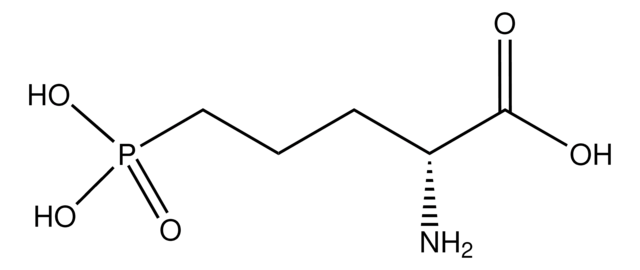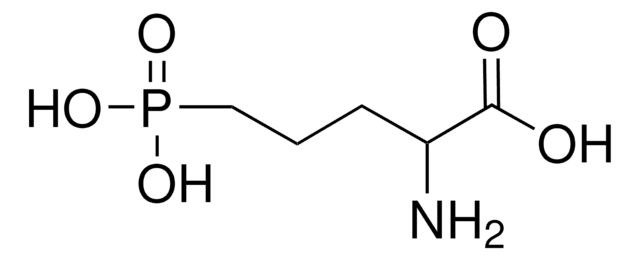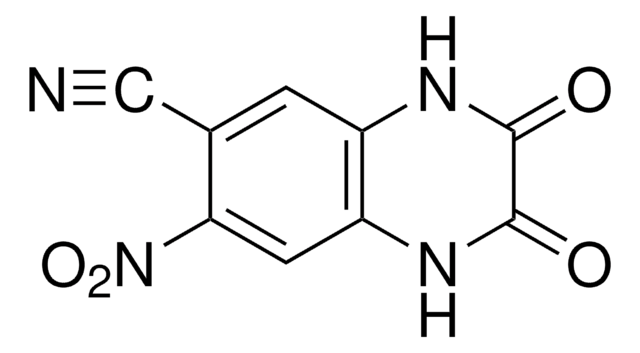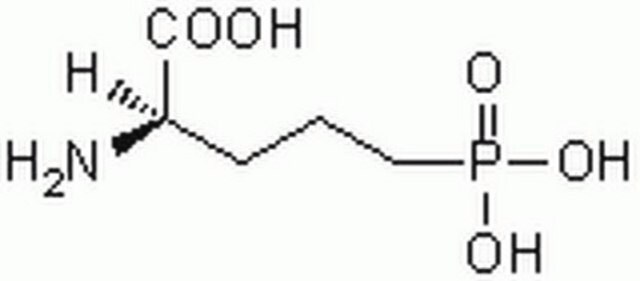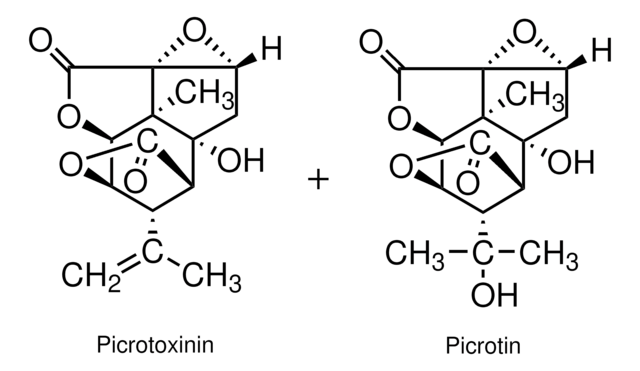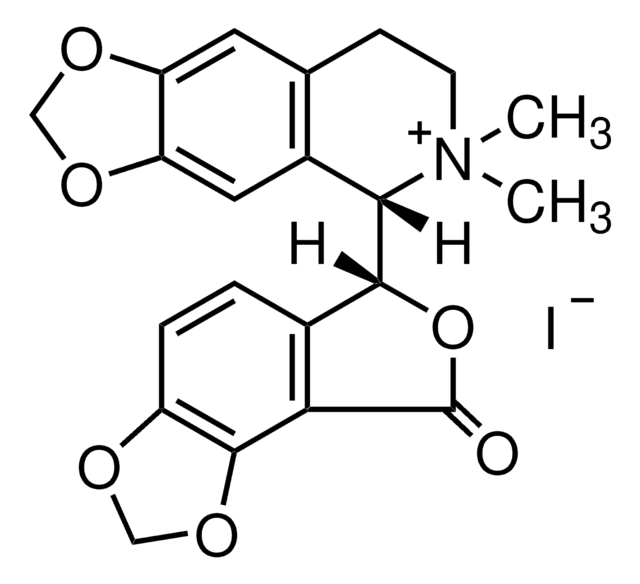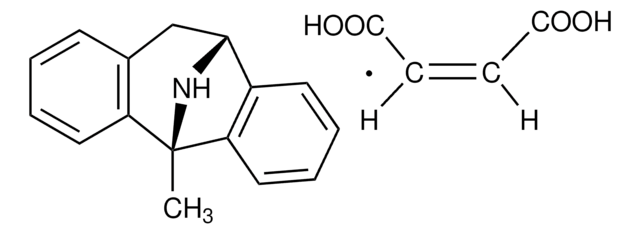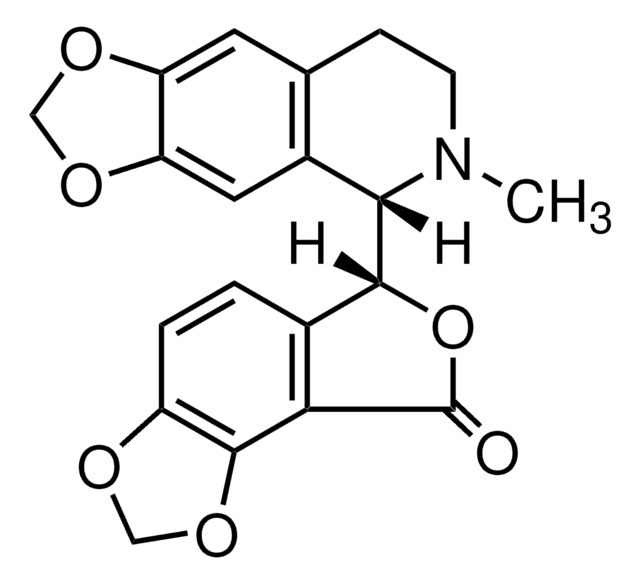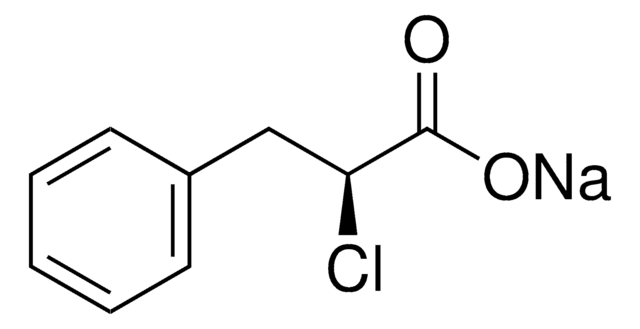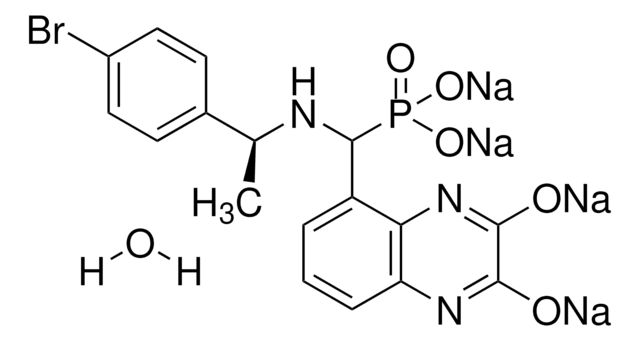N183
NBQX disodium salt hydrate
≥98% (HPLC), lyophilized powder, neuroprotective AMPA/kainate glutamate receptor antagonist
Synonyme(s) :
1,2,3,4-Tetrahydro-6-nitro-2,3-dioxo-benzo[f]quinoxaline-7-sulfonamide disodium salt hydrate, FG 9202 disodium salt hydrate
About This Item
Produits recommandés
Nom du produit
NBQX disodium salt hydrate, ≥98% (HPLC)
Niveau de qualité
Essai
≥98% (HPLC)
Forme
lyophilized powder
Conditions de stockage
desiccated
Couleur
, brown to dark red-brown
Solubilité
H2O: >10 mg/mL
Température de stockage
2-8°C
Chaîne SMILES
O.[Na+].[Na+].NS(=O)(=O)c1cccc2c1c(cc3nc([O-])c([O-])nc23)[N+]([O-])=O
InChI
1S/C12H8N4O6S.2Na.H2O/c13-23(21,22)8-3-1-2-5-9(8)7(16(19)20)4-6-10(5)15-12(18)11(17)14-6;;;/h1-4H,(H,14,17)(H,15,18)(H2,13,21,22);;;1H2/q;2*+1;/p-2
Clé InChI
LQSCHRKYVVVUFA-UHFFFAOYSA-L
Informations sur le gène
human ... GRIA1(2890) , GRIA2(2891) , GRIA3(2892) , GRIA4(2893) , GRIK1(2897) , GRIK2(2898) , GRIK3(2899) , GRIK4(2900) , GRIK5(2901)
Application
- in N-methyl-D-aspartate receptor (NMDAR) kinetic studies
- as an α-amino-3-hydroxy-5-methyl-4-isoxazolepropionic acid (AMPA) receptor antagonist for the electrophysiological studies cultured neurons
- in the extracellular solution for current/voltage (I/V) relationship and rectification index experiments in excitatory postsynaptic currents (EPSCs) mediated by NMDA receptors (EPSCNMDAR)
Actions biochimiques/physiologiques
Caractéristiques et avantages
Mention d'avertissement
Warning
Mentions de danger
Conseils de prudence
Classification des risques
Eye Irrit. 2 - Skin Irrit. 2 - STOT SE 3
Organes cibles
Respiratory system
Code de la classe de stockage
11 - Combustible Solids
Classe de danger pour l'eau (WGK)
WGK 3
Point d'éclair (°F)
Not applicable
Point d'éclair (°C)
Not applicable
Équipement de protection individuelle
dust mask type N95 (US), Eyeshields, Gloves
Faites votre choix parmi les versions les plus récentes :
Certificats d'analyse (COA)
Vous ne trouvez pas la bonne version ?
Si vous avez besoin d'une version particulière, vous pouvez rechercher un certificat spécifique par le numéro de lot.
Déjà en possession de ce produit ?
Retrouvez la documentation relative aux produits que vous avez récemment achetés dans la Bibliothèque de documents.
Les clients ont également consulté
Notre équipe de scientifiques dispose d'une expérience dans tous les secteurs de la recherche, notamment en sciences de la vie, science des matériaux, synthèse chimique, chromatographie, analyse et dans de nombreux autres domaines..
Contacter notre Service technique
